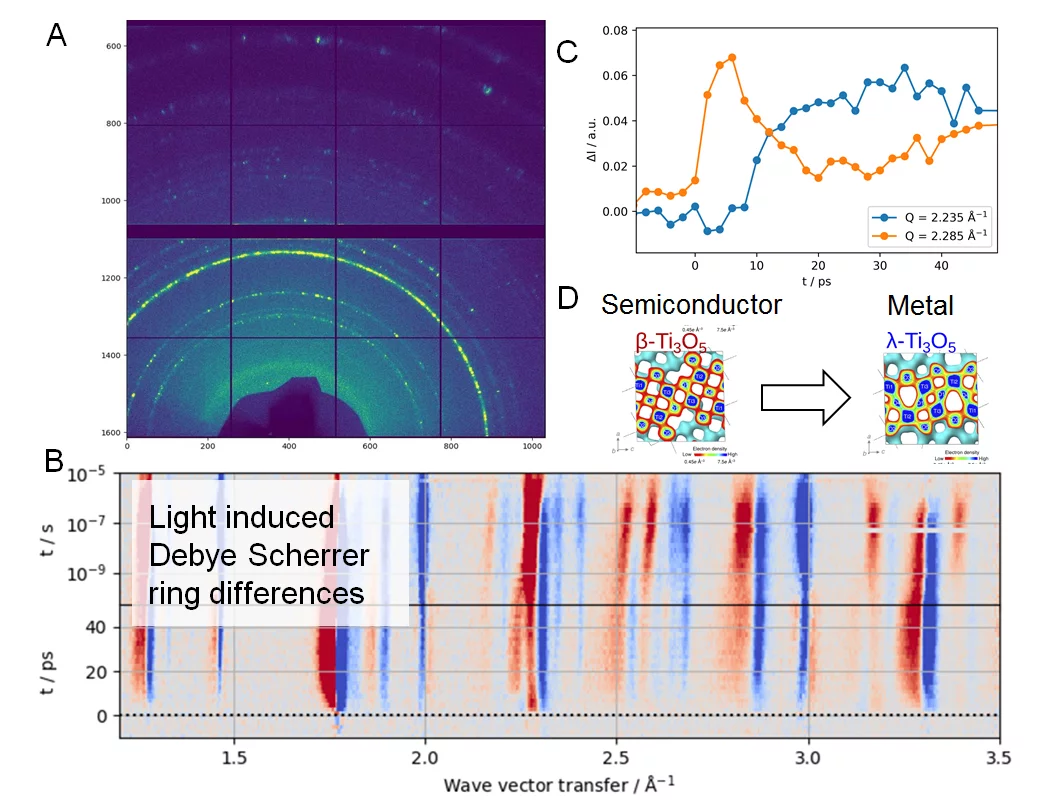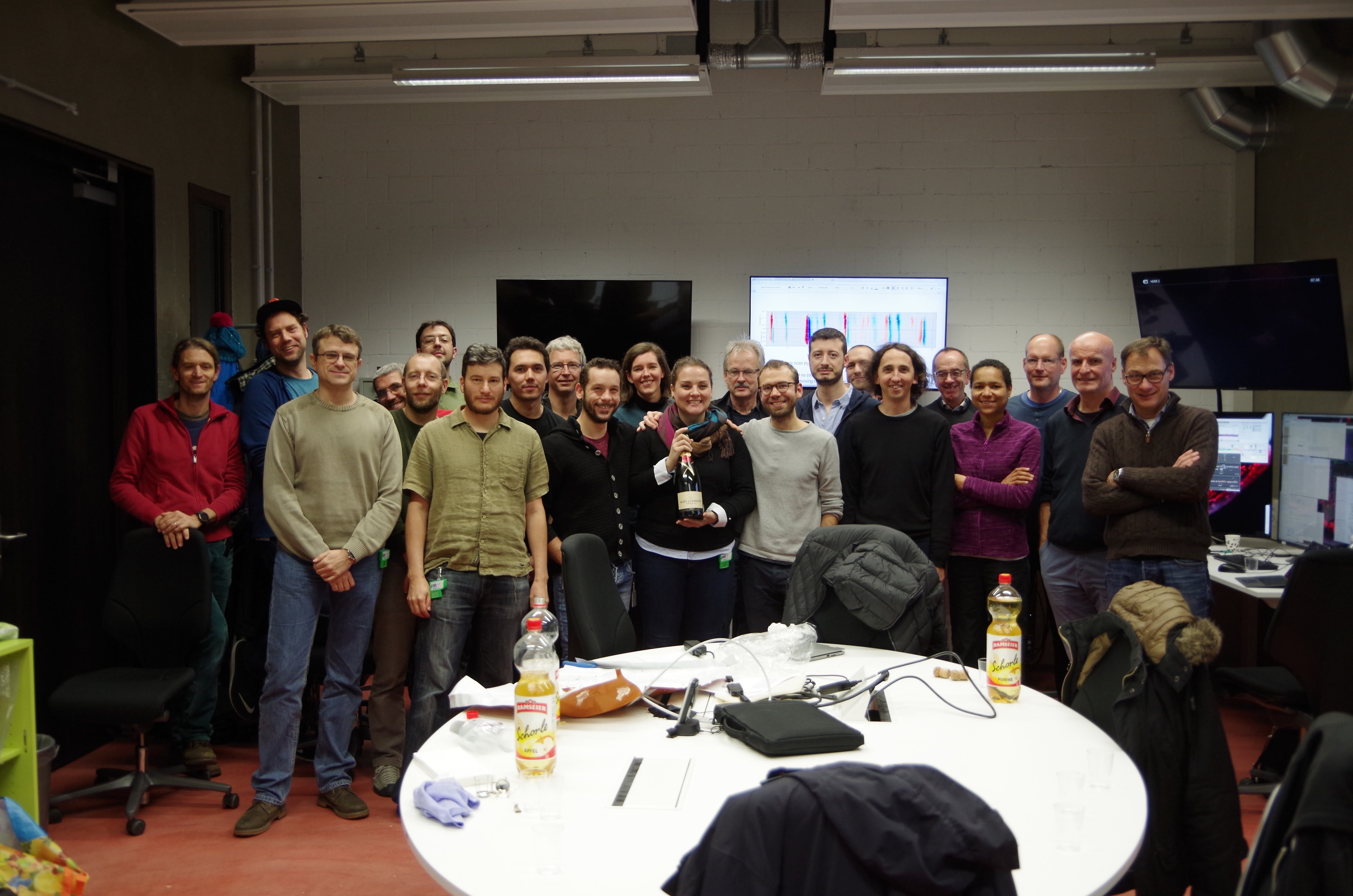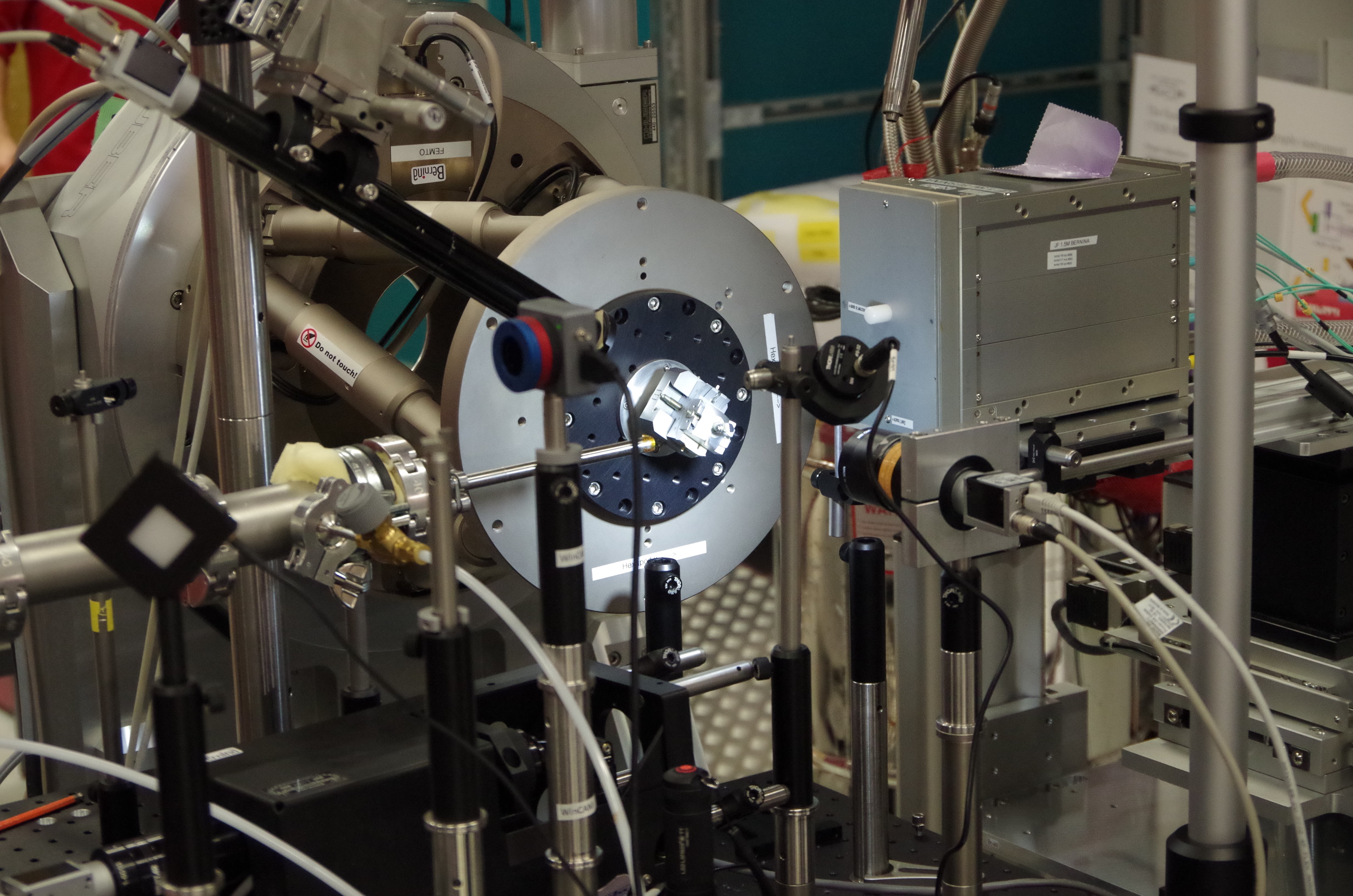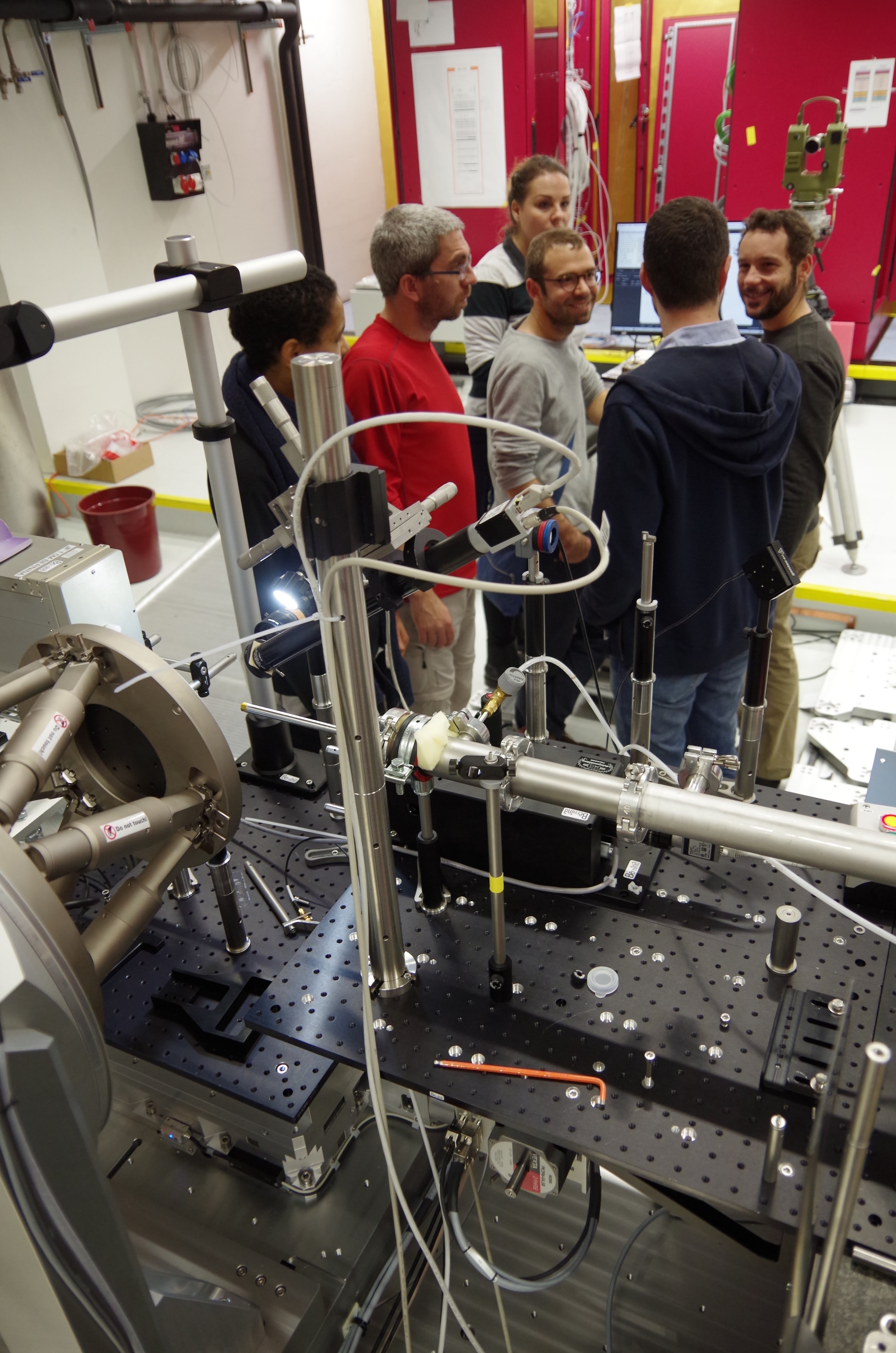On the 30th of November 2017 SwissFEL saw its first time resolved pilot experiment in the Bernina experimental station of the SwissFEL ARAMIS beamline. A team of scientists from the University of Rennes, ESRF and PSI, led by Marco Cammarata (Univ. Rennes) and Henrik Lemke (PSI), successfully started the experimental phase at SwissFEL. The goal was to study the picosecond dynamics of a light-induced phase transition from a semiconductor to metallic crystal structure in a Titanium Oxide (D). In nanoparticles, the transition occurs reversibly and may be interesting for data storage applications. The transition was studied by powder X-ray diffraction using the 3rd Harmonic 6.6 KeV Photons (~1% of fundamental @ 2.2 KeV 220 μJ) of SwissFEL (A: Diffraction image, 100 pulse average ). After excitation with infrared laser light (800nm, 42 mJ/cm2), changes in the Debye-Scherrer diffraction rings indicate the transient population changes in the different phases (B). A cascade of dynamic processes from few picosecond acoustic lattice deformation to phase transition from ~10 picosecond to microsecond timescale could be observed (B/C). Once fully analyzed the scientists hope to fully describe the time scale and mechanisms of the photo transformation.
The SwissFEL Bernina experimental station headed by Gerhard Ingold and Henrik Lemke is designed for femtosecond pump-probe experiments in condensed matter and material science, employing photon-in photon-out techniques in the energy range 4 – 12.4 keV. It includes a femtosecond optical laser system to generate a variety of pump beams (from the UV up to the THz range), an X-ray optical scheme to tailor the X-ray probe beam, shot-to-shot diagnostics to monitor the X-ray intensity and arrival time, as well as two endstations operated at a single focus position with spot size of 2-200 μm. The general purpose endstation was used for the first pilot experiment.
This work was performed in the frame of the CNRS IM-LED LIA, in collaboration with prof. Shin-ichi Ohkoshi & Hiroko Tokoro (Tokyo University) who kindly provided samples.
The SwissFEL Bernina experimental station headed by Gerhard Ingold and Henrik Lemke is designed for femtosecond pump-probe experiments in condensed matter and material science, employing photon-in photon-out techniques in the energy range 4 – 12.4 keV. It includes a femtosecond optical laser system to generate a variety of pump beams (from the UV up to the THz range), an X-ray optical scheme to tailor the X-ray probe beam, shot-to-shot diagnostics to monitor the X-ray intensity and arrival time, as well as two endstations operated at a single focus position with spot size of 2-200 μm. The general purpose endstation was used for the first pilot experiment.
This work was performed in the frame of the CNRS IM-LED LIA, in collaboration with prof. Shin-ichi Ohkoshi & Hiroko Tokoro (Tokyo University) who kindly provided samples.
Facility: SwissFEL
Reference: Gerhard Ingold & Henrik Lemke; gerhard.ingold@psi.ch & henrik.lemke@psi.ch; Paul Scherrer Institut, CH-5232 Villigen PSI, Switzerland
Reference: Gerhard Ingold & Henrik Lemke; gerhard.ingold@psi.ch & henrik.lemke@psi.ch; Paul Scherrer Institut, CH-5232 Villigen PSI, Switzerland



